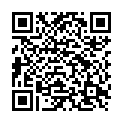|
|
|
| Module code: MST.RAY |
|
|
2V+2U (4 hours per week) |
|
5 |
| Semester: according to optional course list |
| Mandatory course: no |
Language of instruction:
German |
Assessment:
Project work
[updated 05.10.2020]
|
MST.RAY (P211-0218, P231-0116) Mechatronics and Sensor Technology, Bachelor, ASPO 01.10.2012
, optional course, technical
MST.RAY (P211-0218, P231-0116) Mechatronics and Sensor Technology, Bachelor, ASPO 01.10.2019
, optional course, technical
MST.RAY (P211-0218, P231-0116) Mechatronics and Sensor Technology, Bachelor, ASPO 01.10.2020
, optional course, technical
MST.RAY (P211-0218, P231-0116) Mechatronics and Sensor Technology, Bachelor, ASPO 01.10.2011
, optional course, technical
Suitable for exchange students (learning agreement)
|
60 class hours (= 45 clock hours) over a 15-week period.
The total student study time is 150 hours (equivalent to 5 ECTS credits).
There are therefore 105 hours available for class preparation and follow-up work and exam preparation.
|
Recommended prerequisites (modules):
None.
|
Recommended as prerequisite for:
|
Module coordinator:
Prof. Dr.-Ing. Barbara Hippauf |
Lecturer: Prof. Dr.-Ing. Barbara Hippauf
[updated 01.10.2012]
|
Learning outcomes:
First, students will construct an optical model. The model will consist of a lens system, detectors, lighting, a casing and a surface (that will later be lighted).
Students will have to determine the tolerance limits for the alignment of the sensors, the lenses, the microscope slide and the illumination when constructing the model.
After creating the model, the methods and concepts of ray tracing simulations will be presented.
-Application of the ray tracing simulation to the model created by the students
-Evaluation and discussion of the results regarding radiation density, lost rays, and detected rays
-Optimization of the model
-Comparison of the real system with the simulation results
After successfully completing the course, students will have developed a "feeling" for the feasibility of a model and the dimensioning of important optical parameters. They will be able to distinguish between superfluous and necessary changes for the optimization and implementation of a simulation model.
[updated 05.10.2020]
|
Module content:
- Introduction to the construction of simple optical components, lenses, objectives, lighting, detectors and casings
- Modelling and optimization of a given optical system consisting of a light source, lenses, various objects (mirrors, components, etc.) and a photo sensor
- Introduction to the ray tracing simulation: Definition of light sources, determination of the number of source beams and optimization of simulation parameters
-Comparison of the real system with the simulated system
- Evaluation of the simulation results based on photometric parameters (optical flux density, radiant power, solid angle, etc.)
- Optimization of the simulated model based on the evaluation and analysis of detected and lost rays.
- Introduction to methods for describing surfaces
- Important practical tips for simplifying modeling
- Methods
[updated 05.10.2020]
|
Teaching methods/Media:
Lecture in PC room, exercises and application of the simulation directly on the PC.
[updated 05.10.2020]
|
Recommended or required reading:
Script, exercise sheets, project tasks
[updated 05.10.2020]
|


